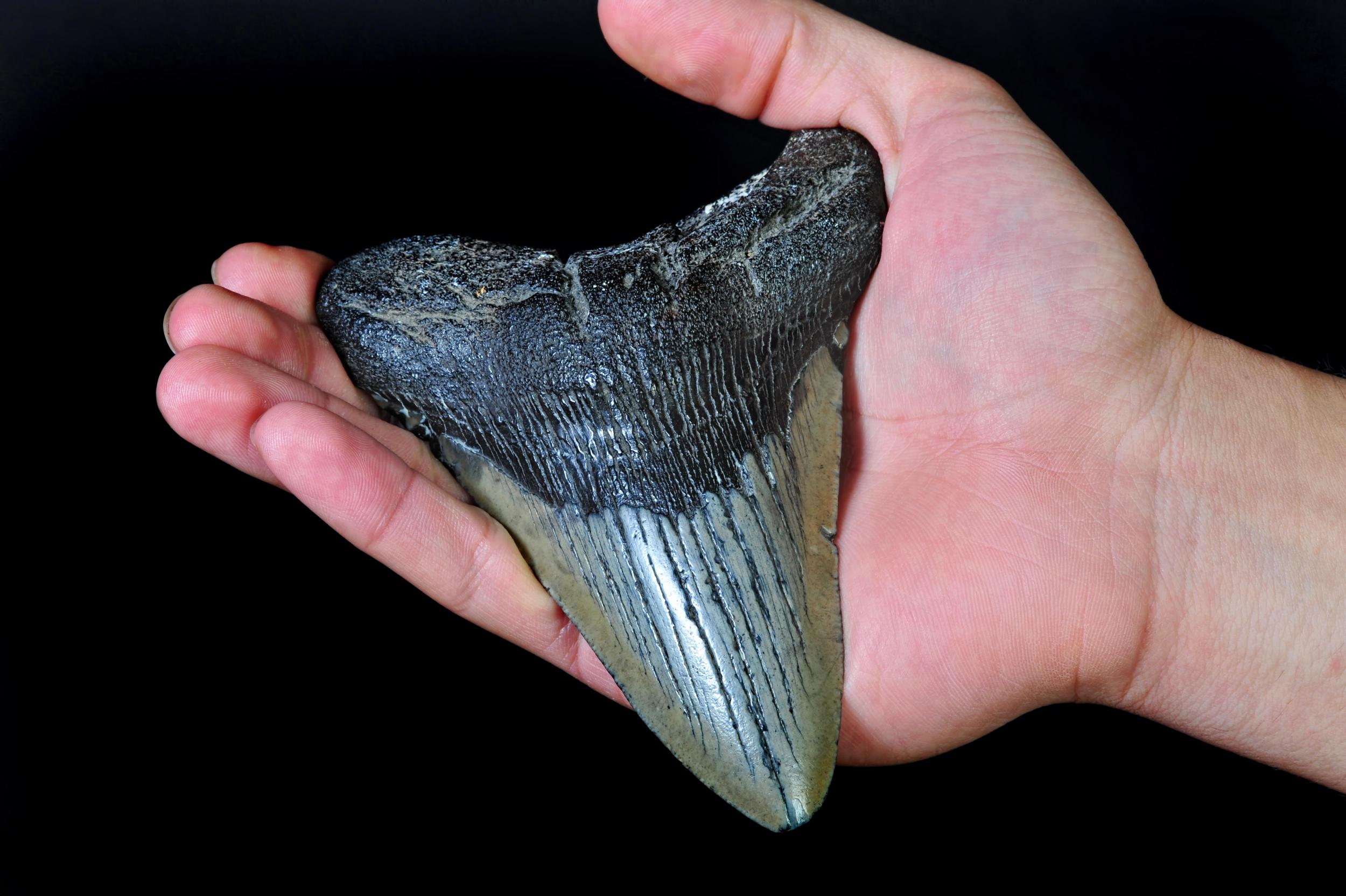Megalodon: Mystery behind extinction of prehistoric 60ft shark may have been solved
Massive predator may have died out due to rise of great whites, scientists say
The megalodon, a giant prehistoric shark which has inspired numerous documentaries, books and blockbuster films, may have become extinct over a million years earlier than previously thought, new research suggests.
Previous research estimated the species died out 2.6 million years ago, and more recent studies linked its demise and that of other marine species to a supernova caused by the death of a star known to have occurred at around that time.
It was thought the radiation caused by cosmic rays hitting the planet could have caused a huge spike in cancer rates among the largest animals.
But a re-examination of the fossil record has revealed the Otodus megalodon, which could grow up to 59 feet long, almost three times larger than the biggest recorded great white shark – may have died out 3.6 million years ago, and scientists now say its extinction could be related to the rise of its smaller cousin.
A team of researchers led by vertebrate paleontologist Robert Boessenecker with the College of Charleston, in South Carolina, found in many places there were data problems with individual fossils in the study estimating extinction date.
They found genuine fossil occurrences were present until the end of the early Pliocene epoch, 3.6 million years ago. All later fossils either had poor data provenance and likely came from other fossil sites or showed evidence of being eroded from older deposits, research published in the Journal of Life and Environmental Sciences concluded.
Until 3.6 million years ago, the megalodon had a continuous fossil record on America’s West Coast.
“We used the same worldwide dataset as earlier researchers but thoroughly vetted every fossil occurrence, and found that most of the dates had several problems – fossils with dates too young or imprecise, fossils that have been misidentified, or old dates that have since been refined by improvements in geology – and we now know the specimens are much younger,” Dr Boessenecker said.
“After making extensive adjustments to this worldwide sample and statistically re-analysing the data, we found that the extinction of O megalodon must have happened at least one million years earlier than previously determined.”

A fossilised megalodon tooth (Getty)
The findings are “a substantial adjustment”, the research team said, as it means the megalodon likely went extinct long before a large number of extinct seals, walruses, sea cows, porpoises, dolphins and whales all died out around 1 – 2.5 million years ago.
The researchers instead suggest competition with the newly evolved modern great white shark is a more likely reason for megalodon’s extinction.
Great whites first show up in the fossil record with serrated teeth about 6 million years ago and only in the Pacific Ocean.
But by 4 million years ago, they were common in oceans around the globe.
“We propose that this short overlap (3.6 – 4 million years ago) was sufficient time for great white sharks to spread worldwide and outcompete O megalodon throughout its range, driving it to extinction-rather than [their death being due to] radiation from outer space,” Dr Boessenecker said.
He added: “The extinction of O megalodon was previously thought to be related to this marine mass extinction, but in reality, we now know the two are not immediately related.”
The research team also cast doubt on whether the proposed mass extinction really happened as previously theorised, as marine mammal fossils between 1 and 2 million years old are extraordinarily rare, and there remains a two-million-year-long period of “wiggle room”.

Support free-thinking journalism and subscribe to Independent Minds
“It is possible that there was a period of faunal turnover [with] many species becoming extinct and many new species appearing, rather than a true immediate and catastrophic extinction caused by an astronomical cataclysm like a supernova,” Dr Boessenecker said.
Join our commenting forum
Join thought-provoking conversations, follow other Independent readers and see their replies
Comments
Bookmark popover
Removed from bookmarks